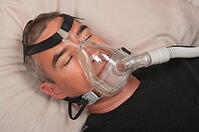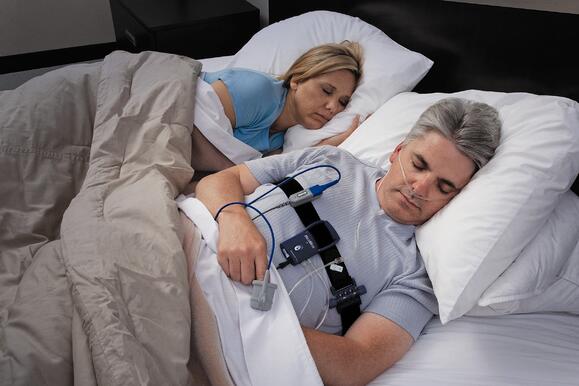
Sleep apnea is a sleep disorder that affects millions of people worldwide. It is a condition where breathing repeatedly stops and starts during sleep. People with sleep apnea often snore loudly and feel tired even after a full night’s sleep. It is a serious condition that can lead to various health problems if left untreated.
Recognizing the symptoms of sleep apnea is crucial for early diagnosis and treatment. The most common symptoms of sleep apnea include loud snoring, gasping for air during sleep, awakening with a dry mouth, morning headaches, and difficulty staying asleep, known as insomnia. People with sleep apnea may also experience excessive daytime sleepiness, fatigue, and irritability.
According to research conducted by the staff of SweetIslandDreams.com, estimates of the number of persons who suffer from sleep apnea vary widely depending on the research study that was conducted. According to several studies, obstructive sleep apnea might affect as much as 38 percent of the population, with males and older folks being more likely to be affected.
It is essential to consult a doctor if you suspect that you or someone you know may have sleep apnea. Early diagnosis and treatment can help improve the quality of life and reduce the risk of developing other health problems. In this article, we will discuss in detail the symptoms of sleep apnea and how to recognize the signs.
Risk Factors for Sleep Apnea
There might be many risk factors that people overlook. Here are some to be taken into consideration:
Age and Gender
Although sleep apnea can affect people of any age, it is more common in older adults. As people age, their risk of developing sleep apnea increases. Men are also more likely to develop sleep apnea than women. However, women are more likely to develop sleep apnea after menopause.
Weight and Obesity
Being overweight or obese is a significant risk factor for sleep apnea. Excess weight can cause fat deposits around the upper airway, which can obstruct breathing during sleep. Losing weight can help reduce the severity of sleep apnea and may even eliminate it in some cases.
Family History
Having a family history of sleep apnea increases the likelihood of developing the condition. Genetics may play a role in the size and shape of the airway, which can affect breathing during sleep.
Nasal Congestion and Obstruction
Nasal congestion and obstruction can make it more difficult to breathe during sleep, increasing the risk of sleep apnea. Allergies, sinus problems, and a deviated septum can all contribute to nasal congestion and obstruction.
Smoking and Alcohol Consumption
Smoking and alcohol consumption can both increase the risk of sleep apnea. Smoking can cause inflammation and irritation in the airway, while alcohol can relax the muscles in the throat, making it more likely for the airway to become obstructed during sleep.
Identifying and addressing these risk factors can help reduce the likelihood of developing sleep apnea. However, it is important to note that even individuals without any of these risk factors can still develop sleep apnea. Therefore, it is essential to be aware of the symptoms and seek medical attention if necessary.
Symptoms of Sleep Apnea
Sleep apnea is a condition that affects breathing during sleep. It can be difficult to recognize the symptoms of sleep apnea, as they can vary from person to person. However, there are some common signs that may indicate that you have sleep apnea.
Loud Snoring
One of the most common symptoms of sleep apnea is loud snoring. If you snore loudly and frequently, it may be a sign that you have sleep apnea. Snoring can be disruptive to your sleep and the sleep of those around you.
Pauses in Breathing During Sleep
Another common symptom of sleep apnea is pauses in breathing during sleep. These pauses can last for a few seconds or longer and can occur many times throughout the night. If you have sleep apnea, you may not be aware of these pauses, but they can disrupt your sleep and cause other symptoms.
Choking or Gasping During Sleep
Some people with sleep apnea may experience choking or gasping during sleep. This can occur when the airway becomes blocked during sleep, causing a decrease in oxygen levels in the body. This can be a serious symptom and should be evaluated by a doctor.
Daytime Sleepiness and Fatigue
Daytime sleepiness and fatigue are common symptoms of sleep apnea. If you have sleep apnea, you may feel tired and sleepy during the day, even if you have had a full night’s sleep. This can make it difficult to concentrate and perform daily activities.
Morning Headaches
Another symptom of sleep apnea is morning headaches. If you wake up with a headache in the morning, it may be a sign that you have sleep apnea. Headaches can be caused by a decrease in oxygen levels during sleep.
Difficulty Concentrating and Memory Problems
People with sleep apnea may also experience difficulty concentrating and memory problems. This can be due to the disruption of sleep caused by sleep apnea. If you have sleep apnea, you may find it difficult to focus on tasks and remember important information.
Irritability and Mood Swings
Sleep apnea can also cause irritability and mood swings. If you have sleep apnea, you may feel irritable and moody during the day, even if you have had a full night’s sleep. This can be due to the disruption of sleep caused by sleep apnea.
Decreased Libido
Finally, sleep apnea can cause a decrease in libido. If you have sleep apnea, you may experience a decrease in sexual desire and performance. This can be due to the disruption of sleep caused by sleep apnea.
Conclusion
Overall, sleep apnea is a serious condition that can have significant impacts on a person’s health and quality of life. It is important to be aware of the symptoms and seek medical attention if they are present.
While snoring is a common symptom of sleep apnea, it is not always present. Other symptoms to look out for include pauses in breathing during sleep, gasping for air, and waking up with a dry mouth or headache. Children may also exhibit symptoms such as hyperactivity, bedwetting, and unusual sleeping positions.
Diagnosis and treatment of sleep apnea typically involves a sleep study to monitor breathing and other bodily functions during sleep. Treatment options may include lifestyle changes, such as weight loss and avoiding alcohol and sedatives, as well as the use of continuous positive airway pressure (CPAP) machines or other devices to help keep the airway open during sleep.
It is important to address sleep apnea promptly, as untreated sleep apnea can lead to serious health problems such as high blood pressure, heart disease, and stroke. By recognizing the symptoms and seeking appropriate medical care, individuals with sleep apnea can improve their quality of life and reduce their risk of complications.











